Mindfulness: Helpful Tips and Techniques for Anxiety and Emotional Dysregulation
According to Jon Kabat-Zinn, mindfulness is, “awareness that arises through paying attention, on purpose, in the present moment, non-judgmentally.” Based on this definition alone, you can see that mindfulness can be incorporated into our daily lives without consuming additional time.
How to Add Mindfulness to Your Life
Mindfulness can be practiced throughout the day, and it can be helpful in dealing with symptoms of stress, anxiety, depression, and trauma. It can also be useful in helping us be aware of our emotions and help regulate them. “Noticing non-judgmentally” is at the heart of mindfulness, so if you notice yourself judging yourself, others, or even your mindfulness practice, be aware of that and make an effort to shift back into noticing without judgment.
One of the great things about practicing mindfulness is that there are many ways to incorporate it in your daily life. For example, you can start your day off with a mindfulness-based yoga practice, take a walk and notice your surroundings, or practice mindful breathing to calm yourself down when feeling overwhelmed, stressed, or anxious. Thích Nhất Hạnh, known as the “father of mindfulness”, taught that simply practicing mindfulness while doing daily chores can help allow one to be present even when doing mundane tasks. Mindfulness can be incorporated at meal times to help us truly notice the smell, taste, texture, and experience of eating our food. It can also be used to help us be fully present (rather than distracted) when spending quality time with the people we care about.
Mindful Breathing
There are various mindful breathing techniques that have been shown to promote calmness and clarity. A practice known as “peacefully abiding”, is the act of bringing awareness to your breath without changing it or setting any expectations. It’s allowing yourself to be present in the act of breathing how you normally would and aren’t even noticing it.
Diaphragmatic breathing is really helpful for easing shortness of breath, helping to calm one’s body, and helping bring one back into their body and out of their thoughts.. This state of conscious breathing allows you to focus on your breath, regulate your nervous system, and feel more grounded. If breathing diaphragmatically, you should be able to notice your belly rise and fall with your breath.
How Can We Use Mindfulness to Regulate Our Emotions?
Emotional regulation is an executive functioning skill, and it means that a person is able to respond in a socially appropriate way to external stimuli. Being mindful about your breath is similar to being mindful about your emotions. It involves bringing awareness to the issue at hand–in this instance, it’s how we are feeling and/or are reacting to a situation. Regulating our emotions can be difficult when we haven’t practiced doing so before. Take a moment to be present and experience your feelings as they come. Try to understand your feelings and reflect on why you are feeling this way, and see if you can do so without passing judgment upon yourself. See if you can implement relaxation techniques when you catch yourself feeling overwhelmed by strong emotions.
Being aware of one’s emotions, being curious about them, and being intentional about how one responds to them can have many positive impacts. The next time you start to feel overwhelming or uncomfortable emotions showing up, see if you can be aware of your emotions without judging them (or the situation), and utilize these mindfulness techniques to help you calm your body. When we come from a calmer place, we’re able to be more intentional about how we would like to respond to a given situation.
Hopefully this information helps you to be more aware of your emotions while also providing you with practical strategies for integrating mindfulness in your everyday life.
Mindfulness-Based Apps for Meditation & Breathing:
Calm - meditation and anxiety
Liberate - Black community centered meditation
Headspace - meditation and anxiety
iBreathe - breathing and anxiety
Search Our Other Blogs!
Interested in Mindfulness-Based Counseling?
If you’re a Marylander who knows that counseling is the direction you need to take, the therapists at LifeSpring Counseling Services are here to help. We offer online counseling services for mindfulness, depression, anxiety, trauma, and grief and loss. We also offer Brainspotting as a specialized service, and Brainspotting can be done online, too!
Here’s how you can get started! Mindfulness-based counseling isn’t the only service offered at our Maryland office
The counselors and social workers at our Maryland office also offer counseling services for trauma, grief and loss, boundary setting, communication skills, and difficult life transitions. We also offer specialized counseling services including Brainspotting and spiritually-integrated counseling. Because we are located next to several local universities, we also work with college students and international students.
Written By: Melissa Wesner, LCPC
Photo credit: cottonbro on Pexels
Date of download: 7/15/2022


